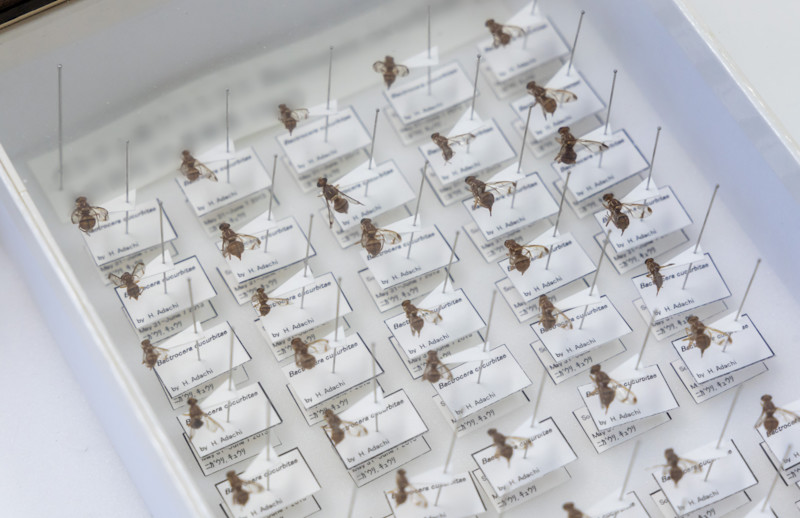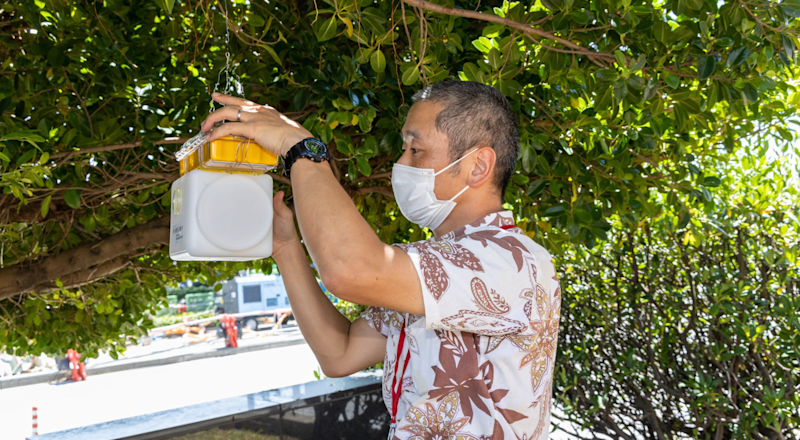The system was designed and programmed by Shinobu Sukenari, a MAFF senior inspector, using the following requirements: they should take a photo of the trap at least once a day and report them over the internet. Secondly, the systems should run for a month without external power. Finally, the system should be protected from the sun, wind, and rain.
Fly trapped
“We use a [trap] to capture and kill the target,” Soichi Nagasato, CEO of Mechatrax who helped develop the monitoring station, tells us. “Then we photograph the inside of the trap. The camera uses a Raspberry Pi Camera Module V2 and is connected to a Raspberry Pi 3. Other components include a power management board for intermittent operation, an LTE [4G wireless network] board, and dry batteries. The complete set of equipment is housed in a waterproof box and attached to the pest trap. The inside of the trap is photographed through a window in the waterproof box and the images are emailed to the administrator via [the internet].”

The batteries are nothing special – just eight AAs, enough to power a Sega Game Gear – and even the special case is made from an off-the-shelf, waterproof carrying case: “We use the Pelican 1060 Micro Case,” Soichi explains. “It is a transparent case that allows photography from the inside and has no openings. As a result, Pelican’s high water and weather resistance can be used as is.”
Analysis on the fly
As you may be aware, flies are pretty small. This could make it tricky for the system; however, the results were adequate.

“Although fruit flies are roughly 1 cm in size, we were able to obtain enough clear images by email to distinguish between native and target species,” Shinobu says. “This may reduce the time and effort required for field patrols and improve the frequency of checks in areas/seasons with a high risk of infestation.”
How to drive off the unwanted flies is not part of the system. It’s still a prototype, albeit one that is undergoing positive trials. However, as they are able to identify when and where they’re present more quickly and efficiently than with patrols, these methods can be more effective.







